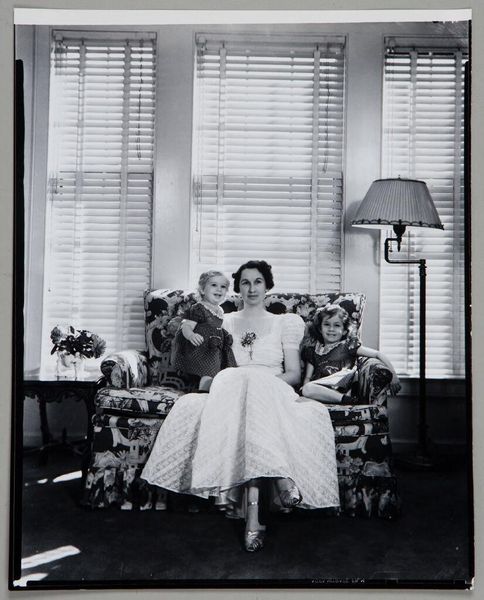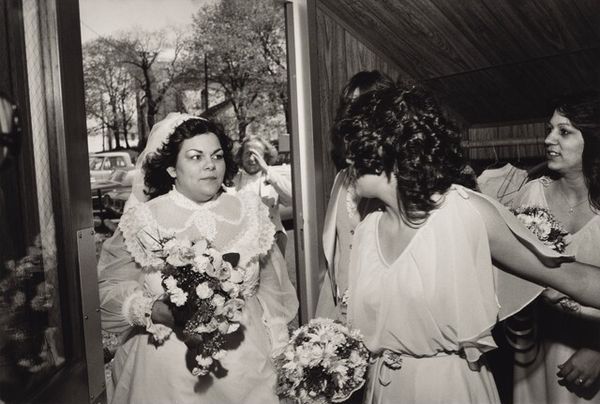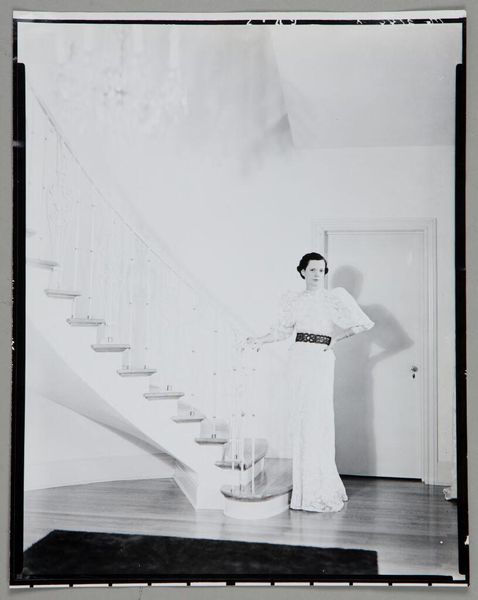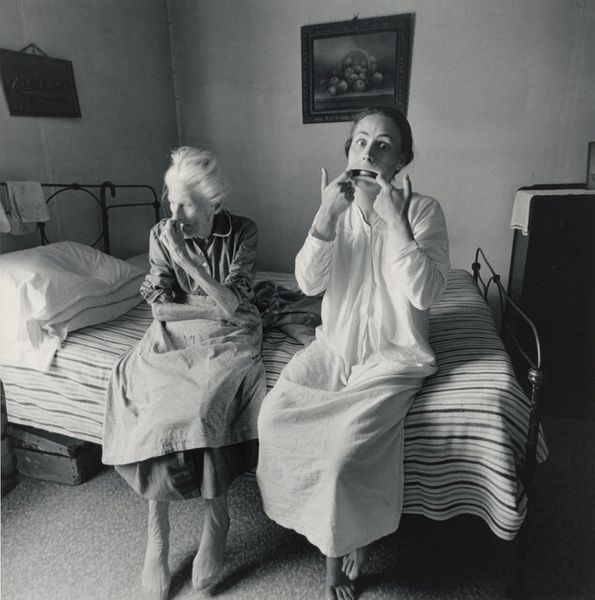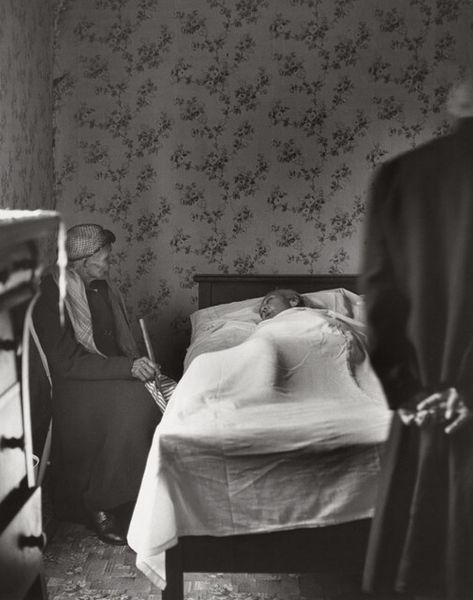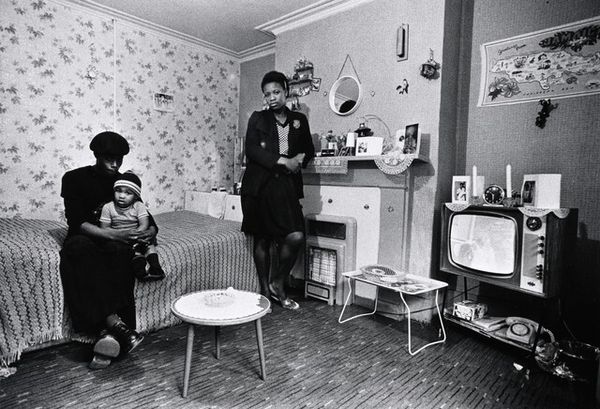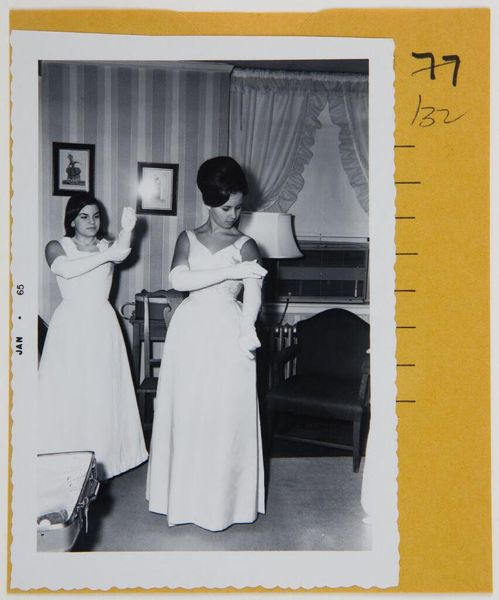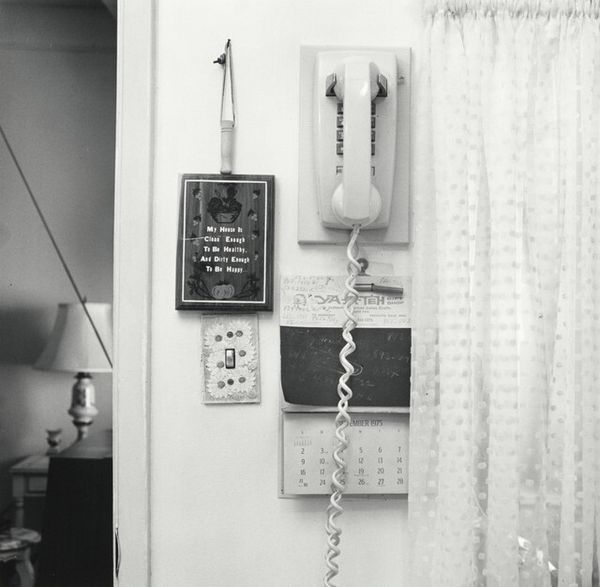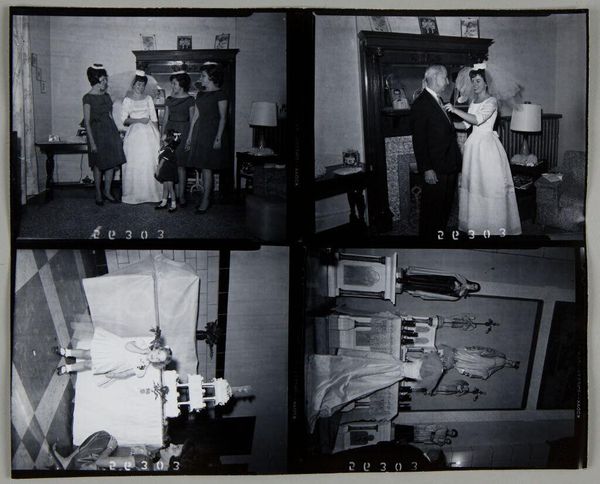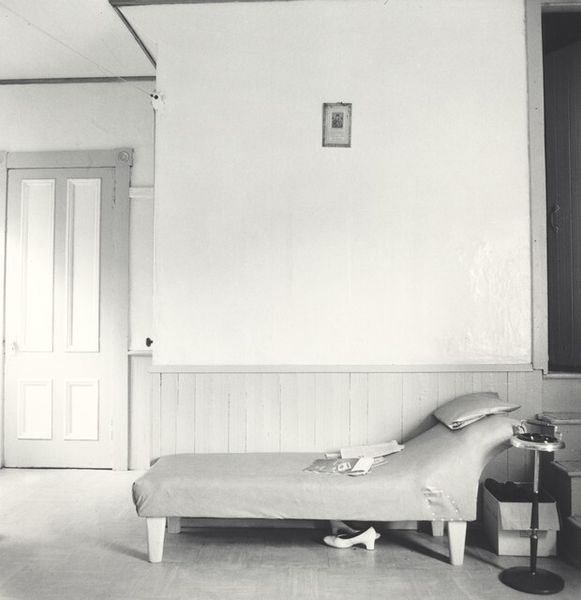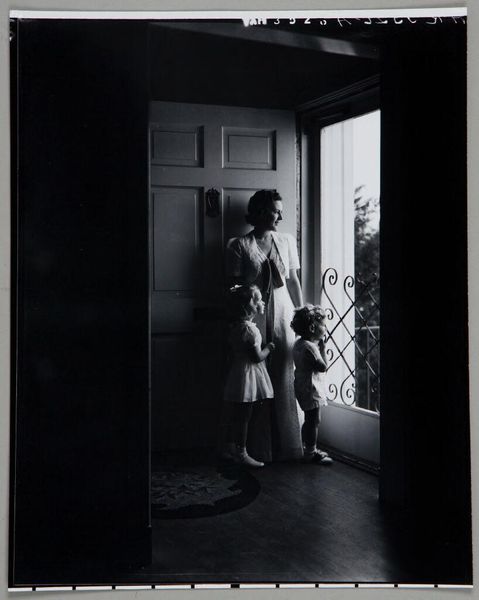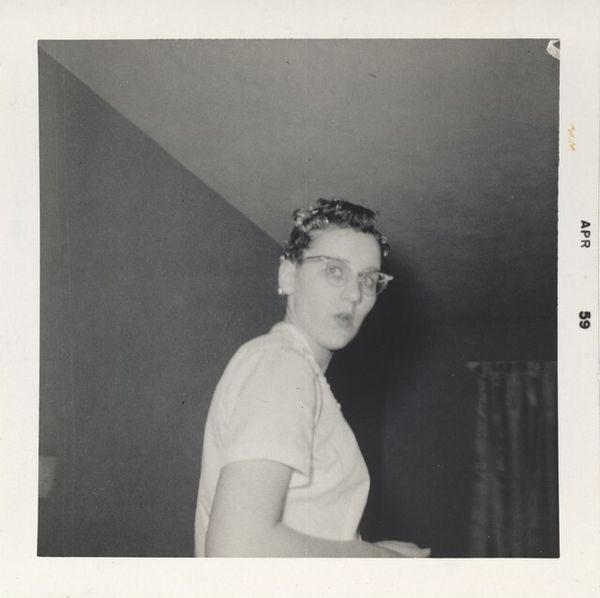
photography, gelatin-silver-print
#
portrait
#
wedding photograph
#
conceptual-art
#
black and white photography
#
street-photography
#
photography
#
black-arts-movement
#
black and white
#
gelatin-silver-print
#
monochrome photography
#
pop-art
#
monochrome
#
realism
Dimensions: image/sheet: 16.8 × 17.8 cm (6 5/8 × 7 in.) mount: 45.8 × 35.5 cm (18 1/16 × 14 in.)
Copyright: National Gallery of Art: CC0 1.0
Editor: Joanne Leonard’s photograph, "Ruth Esther, West Oakland, California," from 1970, is a striking gelatin-silver print. I find it fascinating how this wedding portrait, set against what appears to be a modest interior, complicates traditional representations of marriage. What jumps out at you? Curator: I am struck by the materiality of this image – both in terms of its physical production and what it represents. Leonard’s choice of gelatin-silver print, a relatively accessible photographic process, contrasts with the staged, often lavish wedding portraits typically commissioned. Consider the dress itself: is it custom made, or perhaps mass produced, reflecting different kinds of labor and consumption? Editor: That's a great point. The setting – a simple room with a calendar and a TV – further emphasizes this contrast. Does the Black Arts Movement context play a role here? Curator: Absolutely. Considering this work within the Black Arts Movement, the setting underscores a focus on the everyday experiences and realities of Black communities. This isn't just a photograph; it's a document of social context, forcing us to examine the intersection of personal events like weddings with the socio-economic realities of West Oakland. Do you think the limited palette speaks to these ideas? Editor: Definitely. The black and white, rather than color, seems to push it away from being just a personal photograph and more toward social commentary on that intersection you mentioned. The means of production and its setting are undeniably linked. Curator: Precisely. By considering the materials, the labor involved in creating both the image and the scene it depicts, and its connection to a specific social context, we gain a much deeper understanding of Leonard's intent. Editor: I never thought about how the choice of materials could be so telling. Thanks for that perspective. Curator: My pleasure. It is through questioning these aspects that we see art as more than just an image; we see it as a product of labor and a reflection of social forces.
Comments
No comments
Be the first to comment and join the conversation on the ultimate creative platform.
